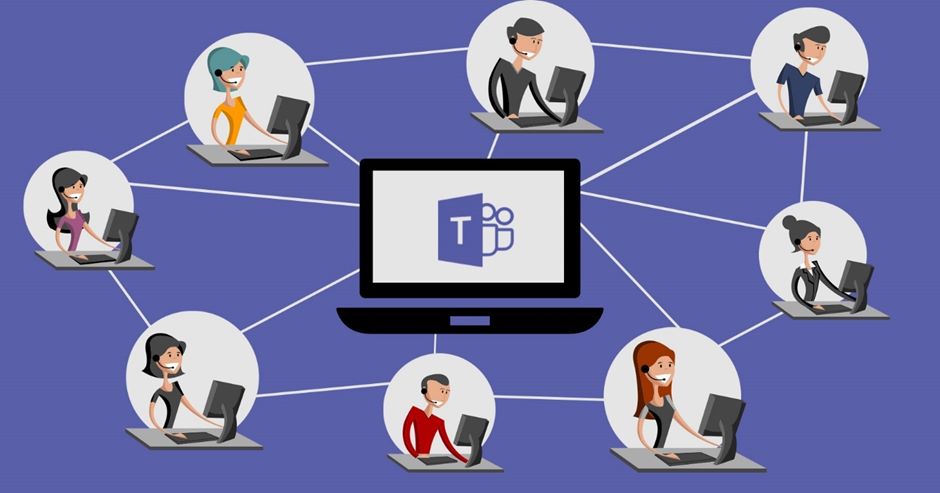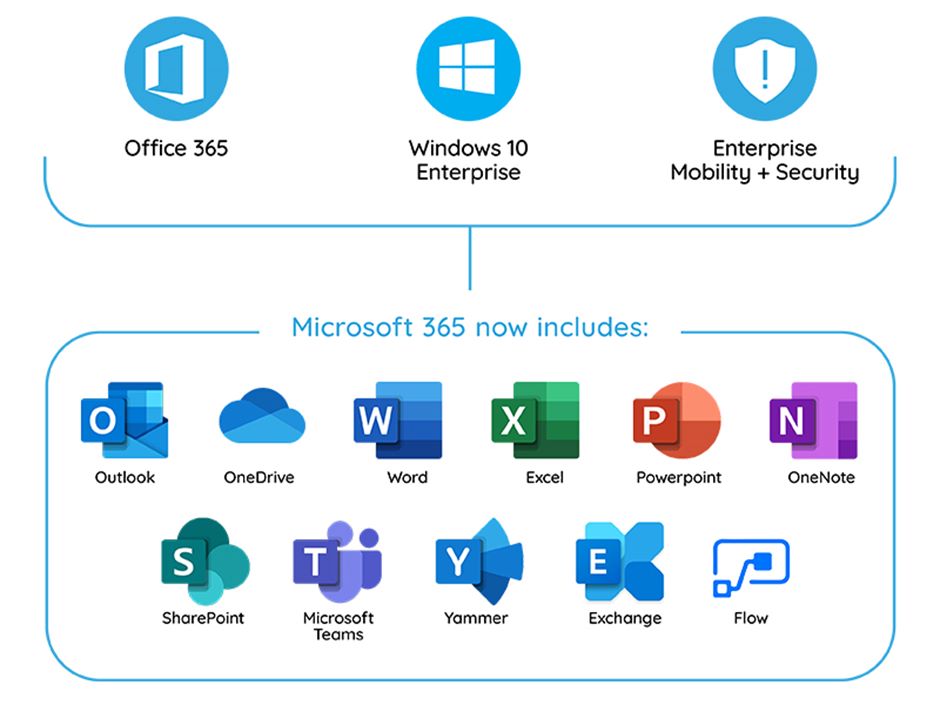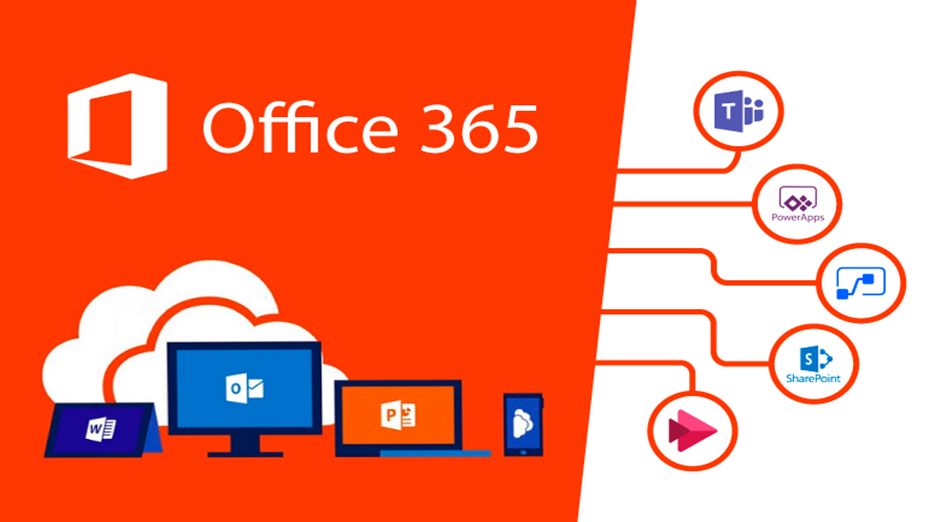
In recent years, the workplace has undergone a significant transformation. With the rise of digital technologies, remote work, and flexible work arrangements, the modern workplace looks vastly different from what it did just a few years ago. The pandemic is, in no small measure, responsible for some of this change. People no longer have to be physically present at an office to work; instead, they can operate from the comfort of their homes. Some of the technologies that have played a vital role in this transformation are Microsoft 365 and Sharepoint.
Being a strategic imperative in the 21st century, Microsoft’s digital transformation is necessary to drive innovation and excellence. Microsoft 365 is a very powerful asset that triggers innovative and digital transformation initiatives. While enhancing customer experience, it simultaneously reaps innovation, and streamlines operations and processes. Digital transformation is the very vehicle that allows employees to work remotely through cloud-based mechanisms.
Let’s explore how Microsoft 365 and Microsoft’s digital transformation its into the modern workplace and support trends like remote work, flexible work arrangements, and digital transformation.
What is Microsoft 365?
Microsoft 365 is a cloud-based suite of productivity tools that includes popular applications like Word, Excel, PowerPoint, and Outlook, as well as newer tools like Teams, OneDrive, and SharePoint.
MS 365 is designed to help businesses of all sizes streamline their work processes, collaborate more effectively, and enable remote work and flexible work arrangements.
How Microsoft 365 Has Transformed the Workplace
Many Microsoft products have been around since the 1990s. From the Windows operating system to Microsoft Office products like Word, PowerPoint, and Excel, almost every computer user has either used these products or at least has heard of them.
However, one can feel the most transformative impact of MS 365 in recent years. Here’s how Microsoft’s digital transformation has changed how people perceive work and do it worldwide. Let’s dig into the nitty gritty of Microsoft security features in the digital transformation.

Remote Work
Microsoft digital transformation has paved the way for remote work. Remote work has been on the rise for years, but the COVID-19 pandemic has accelerated this trend. With many businesses forced to close their offices and move their operations online, remote work has become the new norm for millions of employees around the world. MS digital transformation has surely made it easier for companies to take that leap of faith.
Microsoft 365 top features have played a critical role in enabling remote work by providing employees with the tools they need to collaborate, communicate, and stay productive from anywhere. digital transformation is ideal for firms aiming for a collaborative work environment.
Microsoft Teams

Teams is one of the most critical tools for remote work in the Microsoft 365 suite of products. Teams is a chat-based collaboration platform that allows teams to work together on projects, share files, and hold video conferences. With Teams and Microsoft transformation, employees can stay connected and collaborate in real-time, regardless of their physical location.
OneDrive
Another powerful tool for remote work in Microsoft 365 is OneDrive. OneDrive is a cloud-based storage platform that allows employees to undergo Microsoft transformation and share files from anywhere. With OneDrive, employees can easily collaborate on documents and projects, even if they are working from different locations.
SharePoint Online
As per various reports, there’s a clear indication that all businesses are shifting from on-premises to the cloud. Such is the power of Microsoft’s digital transformation. Cloud computing has made collaboration between teams much easier today than it used to be in the past. SharePoint Online is a web-based collaborative platform for organizations to store, organize, share, and access information and documents from anywhere through the Internet. It also includes features like search functionality, customizable dashboards, and social networking tools to promote collaboration and communication within an organization. Microsoft’s digital transformation can easily be understood with SharePoint.
SharePoint is available both as a cloud-based service through Microsoft’s Office 365 suite and as an on-premises platform.
Flexible Work

Flexible hours and telecommuting have become increasingly popular these days. Your team lead may ask you to fulfill a minimum number of working hours in 24 hours from wherever you want.
Such arrangements give employees more control over their work schedules and help improve work-life balance. Microsoft 365 planner supports flexible work arrangements by providing employees with the tools to work from anywhere, anytime.
For example, to demonstrate how Microsoft’s digital transformation plays out in the case of teams we will see how teams work for an organization employees can use Teams to communicate with colleagues, even if they are working different hours. They can also use OneDrive to access files from home or while traveling. Additionally, employees can use applications like Word and Excel to work on documents and spreadsheets from anywhere without having to be in the office. They can then share and manage these documents via Teams and SharePoint.
Digital Transformation with MS 365

Digital transformation is the process of using digital technologies to transform business processes and operations. As discussed in the introductory paragraph, the role of Microsoft digital transformation is imperative for digital gains. Microsoft transformation process has become increasingly important in recent years as businesses look for ways to improve efficiency, reduce costs, and stay competitive.
Microsoft 365 is a key tool for digital transformation as it provides businesses with the tools and services necessary to streamline operations and collaborate more effectively. But most importantly, these tools help them accelerate their digital transformation journey by switching to the use of digital technologies, products, and services. Microsoft 365 digital transformation is all about using the right platform and technology to drive success and innovation.
For example, businesses can use SharePoint to create intranets and team sites that enable employees to access important information and collaborate on projects. They can also use Microsoft Power BI to analyze data and gain insights into their operations. Similarly, businesses can use Teams to streamline communication and collaboration, reducing the need for emails and meetings. Microsoft digital transformation platform is an open playing field for all Microsoft-related technology to uplift an organization.
You can easily integrate Microsoft 365 with other cloud applications, including CRM, document management, and accounting packages. Such integration and Microsoft digital transformation allow for faster decision-making and drive digital transformation.
Microsoft 365 allows organizations to scale quickly in the cloud without requiring ongoing hardware and infrastructure investment. It comprises hundreds of data centers worldwide, offering lower latency, high resiliency, and no in-house server maintenance. Microsoft transformation is budget-friendly too. Pricing plans can also include “pay-as-you-go” models, allowing organizations to grow capacity on demand and control usage costs when demand is low.
Conclusion
Microsoft 365 is a critical tool for the modern workplace. It allows businesses to support remote work and flexible work arrangements while also supporting digital transformation. As the workplace continues to evolve, Microsoft 365 will undoubtedly play an increasingly important role in helping businesses stay competitive and thrive in a rapidly changing environment. Microsoft transformation can change the fate of organizations when applied intelligently. If you are looking to change the fate of your company with Microsoft digital transformation platform, SharePoint, and digital transformation, you need to trust Xavor.
Xavor can help you on your way to digital transformation. The modern digital workspace is all about leveraging the right tools to bring Microsoft digital transformation that results in a collaborative and innovation-nurturing environment. Trust Microsoft to deliver you technology at every stage of your digital transformation journey.
